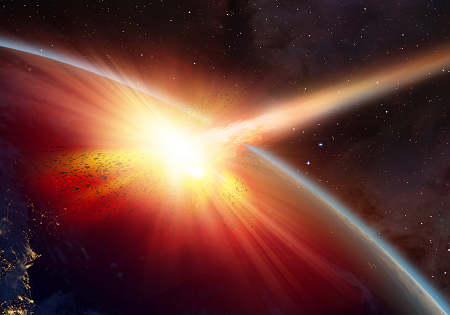Here again you can see the "scale invariance" phenomena, where a small pattern of flooding is repeated in a much bigger scale and pattern in big floods.
To better understand how that works, here is a presentation of Randall about the scale invariance phenomena that you can not only see in mathematics but in geological features, especially in water and flood regimes.
The description of the video reads:
Mega-ripples of Camas Prairie Basin - Filling or Draining? Cosmography101-17.1 w/ Randall Carlson
Cosmography101 Class 17 part 1 with Randall Carlson (2008) Introduction to the features of one of the basins of the temporary Ice Age Lake Missoula in western Montana, USA, and alternative interpretations.
Overview notes/topics: Scale Invariance in Geology “bed-loads”; Paleo-current indicators Small-scale current ripples on Peachtree Creek at Medlock Park after Hurricane Ivan (’04) Camas Prairie ripple field, Lower Flathead Basin, Montana Delta fans Relict features: Mississippi River delta Merging of three ‘flow-throughs’ Identifying features on topographic map of Camas Prairie: breach and drainage points Google Earth views and orientation Photos from overflight Sept. ’07: Markle, Duck Pond, Wills Creek Passes; Ripple field and delta Effects of “mega-scale water erosion” High-water level and drainage thru Rainbow Lake Pass Formation of the ripples Contrary interpretation to current ideas re: draining/filling of basin Depth of water-flow Composition of bed-forms Wreckage from global event Looking at salient features from catastrophic flood helps to recognize more subtle features How deep was the ice in Canada? Possibly 3 miles deep over Hudson Bay Rainbow “Dog” Lake and Pass; super turbulent flows; high-water marks Strandlines/shorelines around National Bison Range and Bitterroot Valley Record of all that ice over Canada melting away Clark Fork River Valley scoured and etched J.T. Pardee calculated flow estimates: 9.5 cubic miles per hour! Introducing the uneducated to Catastrophe
At the time it was a new presentation Randall was creating so that people are better able to understand this phenomena in the landscapes. It is called "Scale Invariance in Geology: Micro- and Mega Flood Effects". Well worth the watch:









